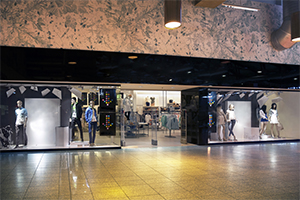
Security Industry Grows in Kenya after Westgate Attack
- By Matt Holden
- Sep 19, 2014
 Shopping centers and other public spaces are seeing an increase in the number of security guards in Kenya after the attack at the Westgate shopping mall a year ago. While the tourism sector has seen a dip in revenue, the private security industry is on the rise, according to a report by the BBC.
Shopping centers and other public spaces are seeing an increase in the number of security guards in Kenya after the attack at the Westgate shopping mall a year ago. While the tourism sector has seen a dip in revenue, the private security industry is on the rise, according to a report by the BBC.
“In a way it has boosted business because our clients have been concerned,” says James Omwando, chief executive of the security firm KK, in the report. “They’ve taken on additional security officers, they’ve invested in new equipment – CCTVs and access control.”
The company has a training center where more recruits are joining the ranks than ever before. Because of the type of attack they faced, training these recruits focuses on surveillance, detection, profiling and a baseline understanding of terrorism.
The rise in terrorism prevention has allowed for more collaboration between private security and Kenya’s security services. Police officers help train while bomb squads and criminal investigation officers stop by to discuss techniques.
This has also led to an increase in government spending on security. The Kenyan government has increase its security budget for the year by 24 percent up to $1.7 billion. A portion of that money is meant to add an additional 10,000 police officers. Those that can’t afford to hire security guards are turning to cheaper forms of security technology.
About the Author
Matt Holden is an Associate Content Editor for 1105 Media, Inc. He received his MFA and BA in journalism from Ball State University in Muncie, Indiana. He currently writes and edits for Occupational Health & Safety magazine, and Security Today.